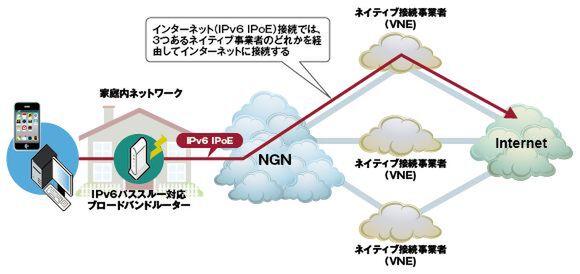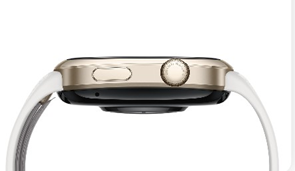ASCII.jp FLET'S "Internet (IPv6 PPP...
04
11
ASCII.jp FLET'S "Internet (IPv6 PPPoE) Connection" Mechanism
This series explores the mechanism of using the IPv6 service that NTT East and NTT West started with FLET'S Hikari Next. In Part 3, we made settings for using "Internet (IPv6 PPPoE) connection" (hereafter, "IPv6 PPPoE connection"), which is one of the IPv6 connection methods. Next, let's explore how this method works.
IPv6 address and prefix on MA-100
This time, with the cooperation of NTTPC Communications, we used two IPv6 PPPoE connection accounts for their Internet connection service "InfoSphere" to create an evaluation connection environment. built. The configuration is as shown in the figure below. Both lines are FLET'S Hikari Next, but one line is also subscribed to Hikari Denwa, so connect the IPv6 tunnel compatible adapter "MA-100" to the LAN port of the Hikari Denwa router. are doing. The other line is an IPv6 dedicated line that directly connects the MA-100 to the ONU and cannot use IPv4 PPPoE.
Connection environment using IPv6 PPPoE built for evaluation
In the IPv4 Internet connection service currently used in general households, the broadband router becomes the gateway (client) of PPPoE (IPv4), and the global address from the ISP is assigned to the broadband router. Then the broadband router becomes a DHCP server and assigns a private address to the PC.
On the other hand, the IPv6 address assignment method in the IPv6 PPPoE connection environment is basically the same as IPv4, but the protocol used is different.
First, MA-100, which has a PPPoE connection with an ISP, is assigned an IPv6 address by "DHCP-PD (DHCP Prefix Delegation)" specified in "RFC3633, IPv6 Prefix Options for DHCPv6". MA-100 assigns IPv6 addresses to hosts (PCs) within the LAN using RA (Router Advertisement) standardized as RFC2462, IPv6 Stateless Address Autoconfiguration.
The big difference from IPv4 is that the IPv6 address assigned by RA is not a private address, but a part of the global address assigned by the ISP by DHCP-PD. Also, it is not an individual address that is assigned by the ISP, but a "prefix".

IPv6 address assignment method and actually distributed prefix
The prefix here is the same as the IPv4 address subnet, and is a "group of addresses". IPv4 uses the expression 192.168.1.0/24, but IPv6 uses the same expression as "2001:2c0:cc00:5500:/64". Only one IPv4 global address can be used for IPv4 home service, but when I tried this time, InfoSphere's IPv6 service was "/56", that is,
A global address that can create 256 "subnets with 2 to the 64th power (= 1844K6744 trillion 073709551616) addresses"
I was able to usewith one contract. You can create 256 subnets larger than the entire IPv4 address (2 to the 32nd power, about 4.2 billion).
Some ISPs assign "/64" which is less than "/56". You can use the number of addresses that are completely different from IPv4.
Confirmation of IPv6 allocation status
On the MA-100, you can check the IPv6 prefix information provided by PPPoE and IPoE in the "DHCP Client Acquisition Information" menu. "DHCPv6 Client Acquisition Information (Internet)" on this screen indicates the IPv6 PPPoE connection introduced so far.
MA-100 address information
On the other hand, this screen also has an item called "DHCPv6 Client Acquisition Information (IPoE)". This is not an "Internet (IPv6 IPoE) connection", but an IPv6 address for use in the FLET'S Hikari Next internal network (NGN). IPv6 IPoE is automatically enabled when you subscribe to FLET'S Hikari Next, but it is an address for using services within NGN and cannot be used for Internet connection.
The figure below shows the status of IPv6 addresses for NGN by IPoE added to the previous figure "IPv6 address assignment method and actually distributed prefixes". In IPoE, it can be seen that the allocation method differs between lines with and without a Hikari Denwa contract. There is no need to be aware of this in general use, but it may cause confusion when trouble occurs. It is good to remember that "IPv6 IPoE is used even when using IPv6 PPPoE connection".
Situation including IPv6 address by IPoE used exclusively for NGN (assignment with "IPoE" at the top of each line). The IPv6 address allocation method for IPv6 PPPoE connections introduced this time does not change with or without a Hikari Denwa contract.
●
Next time, let's take a look at how IPv6 addresses are assigned to each host (PC) in an IPv6 PPPoE connection.








